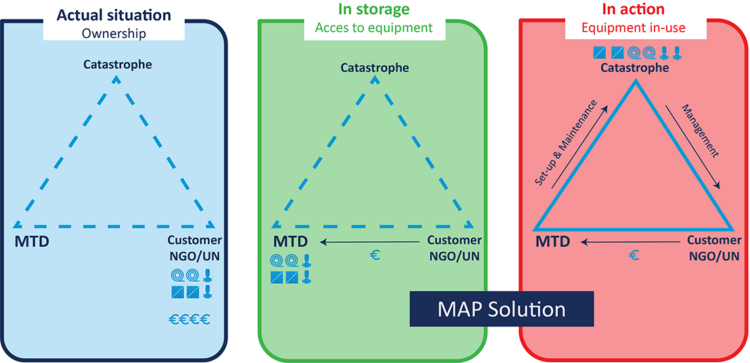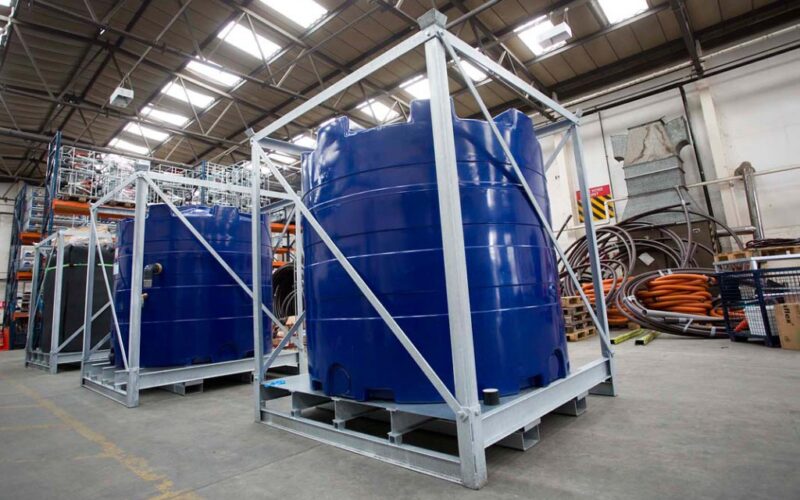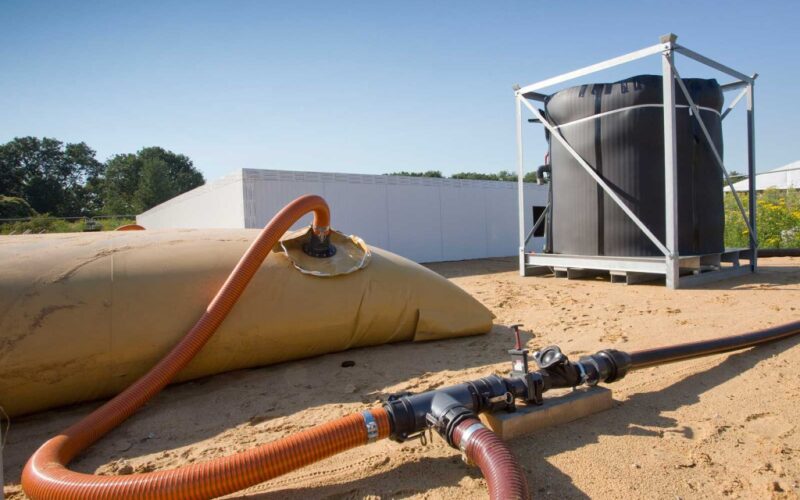Sustainability programs
Water is the number one used resource in the world, it is everyone’s responsibility to preserve this source. The projection is that by 2030, around 50% of the total world’s population will live in regions where there are severe drinking water shortages – (UN Environment program).
The United Nations Sustainable Development Goal number 6 “clean water & sanitation” targets 6 topics to be resolved before 2030 e.g., affordable drinking water for all, improve water quality and increase water-use efficiency. The world, continents, governments, companies, communities, and events, all need to move to sustainability and water circularity to survive in the future.
Post-COVID19, it is especially important for projects and events to meet sustainability and water circularity requirements to survive. Reaching sustainability starts with raising awareness. The following key areas need to be met to meet water related sustainability goals:
-
Plastic bottles and waste are a growing problem worldwide. Many countries and governmental institutions are starting to implement new rules and regulations to limit their use. Some major event organizers are implementing ‘green initiatives’ to reduce plastic waste and meet their sustainability goals.
As the public becomes increasingly aware of this issue, we see that many visitors now carry reusable bottles in their belongings and backpacks. Therefore, solutions like bottle refill stations should be used to encourage visitors to fill up their reusable bottles with a real-time dashboard displaying savings made by the visitors. -
Saving drinking water not only improves the design of water infrastructures but also helps the user to measure water quality by using real-time monitoring systems, leading to better consumption and leaving water available for others. The benefit of this monitoring is that early warnings can be detected from the data, preventing high volumes of water from being leaked or wasted.
In addition, water taps can be fitted with a start/stop button and sensors to promote water savings. Water saving can also be sourced from rainwater harvesting, A/C condensed water, or reusing surface water. -
Wastewater can be treated and reused for flushing toilets, wash water, irrigation water or discharged as surface water. Wastewater filtration can also be applied to water from lakes and rivers.
-
Treating wastewater onsite reduces the frequency of transportation. Sourcing from local depots/warehouses also reduces CO2 footprint.
-
A Disaster Relief Company (DRC) has planned and unplanned missions. It is hard for a DRC to estimate when, how much and what equipment is needed for an unplanned mission. The challenge for each DRC is to invest in the proper scope of equipment for an unknown and unanticipated mission. This results in a burden of capex in unused and “not ready to go” equipment. It also contributes to the increased waste of equipment left after a mission.
Achieving a mutual goal: MTD is more than just a supplier of water infrastructures. Over the past 35 years we have had different roles. From being a sole supplier or consulting our client to partnering with our clients and achieving long term ambitions including on the sustainability front. For this MTD has created several programs.
- MTD’s Availability Program (MAP model)
- Water as a Service
- Personalised Ambition Program
MAP
A Disaster Relief Company (DRC) has planned and unplanned missions. The challenge of investing in the proper scope of equipment for an unknown and unanticipated mission has turned into the need for access to use equipment instead of ownership is growing. Hence, MTD developed an availability program to fulfil this need.
-
MTD’s Availability Program (MAP model) provides the DRC with fast and flexible access to temporary water infrastructure and water treatment packages for unplanned missions.
-
The DRC chooses its standard package as contingency stored in MTD’s warehouses or other locations. By paying a low flat monthly “availability retainer” over five years, a DRC assures itself access to its own most “state of the art” package. This package is certified according to international guidelines and can be employed within 24hrs.
-
When the equipment is needed, the DRC informs MTD where, when, what and how much equipment is needed. Based on the needs of the unplanned mission, an additional fee is paid for the equipment in use. This in-use fee can include set up, maintenance and dismantling by MTD water technicians. After the mission, the equipment returned will be maintained, checked, stored and ready to go for the next mission. Eventually, the MAP model gives a DRC less asset and human resources management, more budget efficiency, and a more practical solution. DRCs can also increase their level of sustainability objectives and contribute toward a more circular economy.
-
- The DRC can focus more on their core business.
- The Map model fulfils the “Pay as you use” paradigm.
- Flexibility to temporarily scale up with MTD’s equipment for a tailored mission.
- 24/7 access to MTD’s centre of knowledge and its worldwide network.
- DRC can donate MTD’s products or MAP model for unplanned missions.

Water as a Service
Helping events reduce drinking water.
Today, organisers of festivals, culinary events and sporting events face challenges invoicing customers (external end-water-users) like food trucks, sponsor booths, hospitality areas, and privately managed kitchens, a realistic price for their water connection and their used water volume.
Currently, the end-user is invoiced a part of the existing infrastructure price and a lumpsum amount to contribute to the overall event water usage, no matter how much water is used. This often results in end-users leaving the water taps running, wasting drinking water.
MTD is moving away from an equipment plumber and towards a service supplier – a water partner. It is no longer about renting and connecting equipment but supplying a service and starts with transparency in pricing. Organisers will receive an offer for the main infrastructure and dedicate service rates for end-user connections based on their peak usage water volume. These service rates include all the equipment and labour needed to make the connection.
“Water as a Service” – A tool for every event organiser with external drinking water users on-site.
As an extra add-on, MTD has developed a new program, “Water as a Service”, which gives transparency in the price for each water connection and monitors the water volume “real-time”. With this option, the organiser can invoice their end-user clients a fee for the service per m3 of drinking water. With this complete solution, the event organiser becomes more sustainable by creating awareness for the end-users about their water usage, which will immediately result in water savings.
-
- Organizers receive a fixed service rate for any water connection of an end-user application. Organisers receive a clear overview of different service rates on an MTD menu rate card.
- Transparency – MTD installs a real-time water meter, which measures and monitors in real-time the water usage volume. This information is for all stakeholders available anytime and “real-time” on a personalised dashboard on their PC or smartphone.
- Event organisers can invoice the end-water-users the correct price of the water connection and the actual m3 usage of drinking water.
- Awareness of water usage is resulting in reduction of overall drinking water for the event.
-
- Transparency in data for the end-user.
- Personalised dashboard for each end-user to monitor water usage on smartphone/PC.
- End-users receive a fair price for their water connection.
- End-users pay for the water service per m3 used drinking water usage.
PAP
Partnering with our clients and achieving long term ambitions, with this in mind MTD created an Ambition Program.
This Program is developed especially for multi-year contracts. MTD appoints a dedicated contact to the customer that will investigate all temporary and existing venues on water usage and makes a report where the customer can save drinking water or groundwater or use other rest water.
Together with the customer and an electrical engineer, it will be decided what improvements will be implemented by looking at the cost and CO2 implications. After the event, the customer receives a report with the results so that decisions can be taken for the next event. MTD’s PAP is a co-creation with the organisers and other critical suppliers to work together and reach mutual sustainable goals.
With MTD’s experience at various events, MTD is keen to share its expertise and data. Ideally, MTD wants to partner up in reaching organisers’ objectives regarding water by sharing risks and taking liability. With all biological- and technical cycle initiatives and products. MTD offers the perfect starting package.


